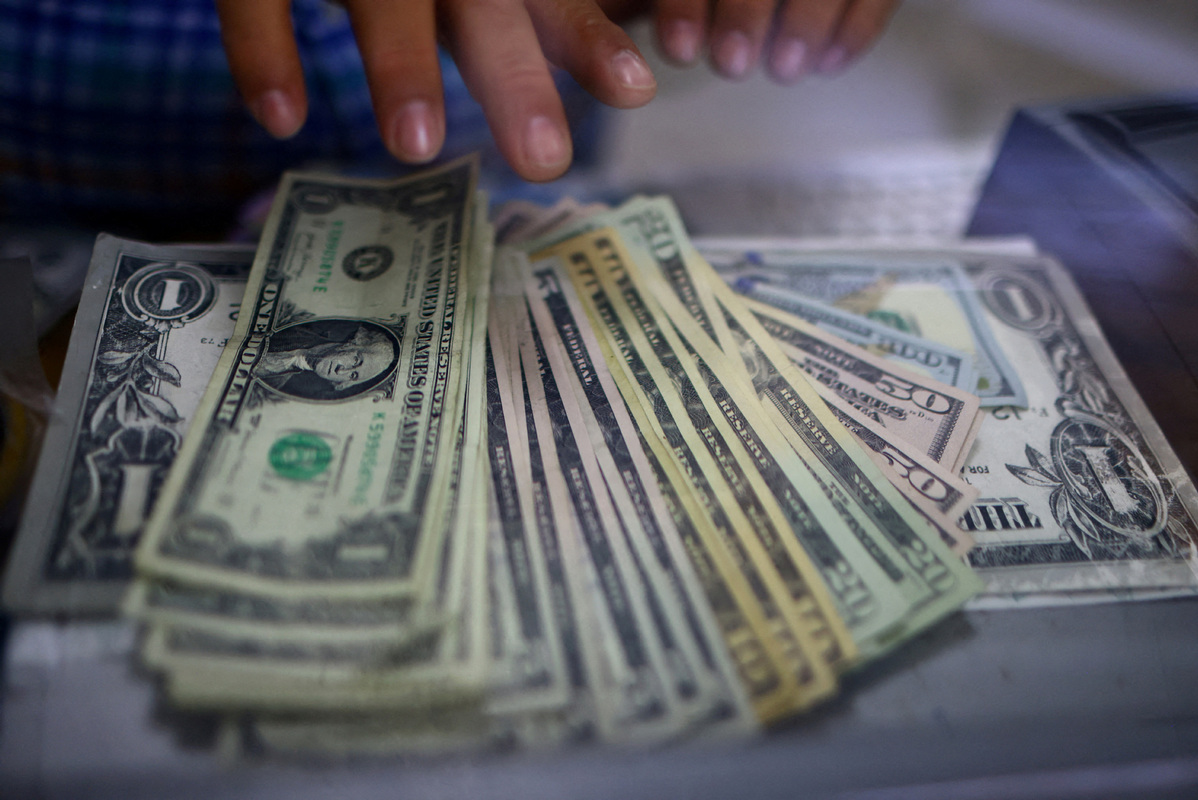Overvalued US dollar damaging world economy


President Donald Trump is at it again. He imposed an additional 10 percent tariff on China's exports to the United States. He also imposed a 25 percent tariff on Canada and Mexico, despite the fact that the US, Canada and Mexico have a free trade agreement, which evolved from the North American Free Trade Agreement to the United States-Mexico-Canada Agreement, and took effect on July 1, 2020. Incidentally, the tariffs on Canada and Mexico have been paused for 30 days.
Trump had threatened to impose the punitive tariffs "if the three countries did not address his concerns about illegal immigration and drug trafficking". But his longstanding concern is the secular trade deficits that the US has had since the 1980s. Tariffs, however, always raise prices at home and make life more difficult for US residents. An August 2018 analysis by economists at the Federal Reserve Bank of New York warned that tariffs not only reduce imports to the US but also end up reducing US exports. Tariffs will not reduce the trade deficit.
The key reason why the US has recorded huge trade deficits is that the US dollar is too strong. If the dollar were weak, the US' exports would rise and imports would decline. Tariffs tend to bolster the value of the dollar, in part because the Federal Reserve tends to keep interest rates higher to fend off inflation and in part because the US will buy fewer foreign goods. This analysis coincides with that of Eswar Prasad, an expert on trade policy at Cornell University, who expects tariffs to end up eroding the competitiveness of US exports in global markets.
Robin Wigglesworth wrote recently in the Financial Times about the "grossly overvalued American dollar". He estimates that the dollar is "15 percent overvalued against the euro, 24 percent against GBP (the British pound), 9 percent against CNY (the Chinese yuan) and 53 percent against JPY (the Japanese yen)".
Some pundits noted the recent strength of the dollar and concluded that the de-dollarization drive is going nowhere. However, the strength of the dollar is related to the high interest rates in the US relative to those of other major economies, including China, Japan and the United Kingdom. Even though the de-dollarization drive is still going on, the dollar should still be a key reserve asset in the short to medium term. So international capital continues to convert into US dollars and buy US bonds.
However, with a 10-year bond yield at close to 4.6 percent and a 30-year bond yield at over 4.8 percent — both clearly well above the expected inflation rate — the interest burden on the federal government has already exceeded the US defense budget. The Congressional Budget Office now projects that interest costs in 2025 will total $952 billion, an 8 percent increase compared with the year before, on top of the 30 percent and 32 percent increases in the previous two years. Over the next decade, the US government's interest payments on the national debt may reach $13.8 trillion.
To me, the fact that 10-year US Treasury bonds need to pay close to 4.6 percent interest suggests that the financial market is factoring inthe risks of a significant depreciation of the dollar. This depreciation, however, in itself is not a sign that the status of the dollar as the preferred reserve currency has changed. It is just what it takes to correct a structural imbalance.
Moreover, I also see a world with different countries opting for different types of international settlements — a healthy advancement that is consistent with sustainable development. If the dollar is grossly overvalued for a long time, the chances are that a crisis will occur.
During the early 1980s, the US dollar was very strong, and fiscal deficits were rising. The Plaza Accord in September 1985 reversed the fortunes of the US economy. The federal deficit declined; the unemployment rate fell; and the US saw its longest expansion in the postwar period. The dual deficits were significantly reduced to manageable levels.
We should remember the lessons from the eurozone. The euro had a long streak of strength, peaking in April 2008, when it hit close to $1.60. Not long after that, the euro debt and financial crisis broke out. Prior to that, the British pound was forced to devalue in 1992, because under the exchange rate mechanism, its exchange rate was tied to the European currency unit and its exchange value against a basket of currencies had risen to unbearable levels.
The Asian Financial Crisis, which broke out in 1997, was also related to the strength of the US dollar. At the time, many Asian currencies were tied to the dollar informally. Excessive dollar strength from around 1995 to 1997 was unbearable for some Asian currencies, which had to devalue.
Exchange rates have to be compatible with macroeconomic fundamentals and sustainable development. A lower value of the dollar would correct its trade deficit much more effectively than tariffs. Freer trade would invigorate the economy — not only the US' economy but also those of its trading partners — and would help restore fiscal balance.
The author is an adjunct research professor at the Pan Sutong Shanghai-Hong Kong Economic Policy Research Institute and Economics Department, Lingnan University, Hong Kong.
































